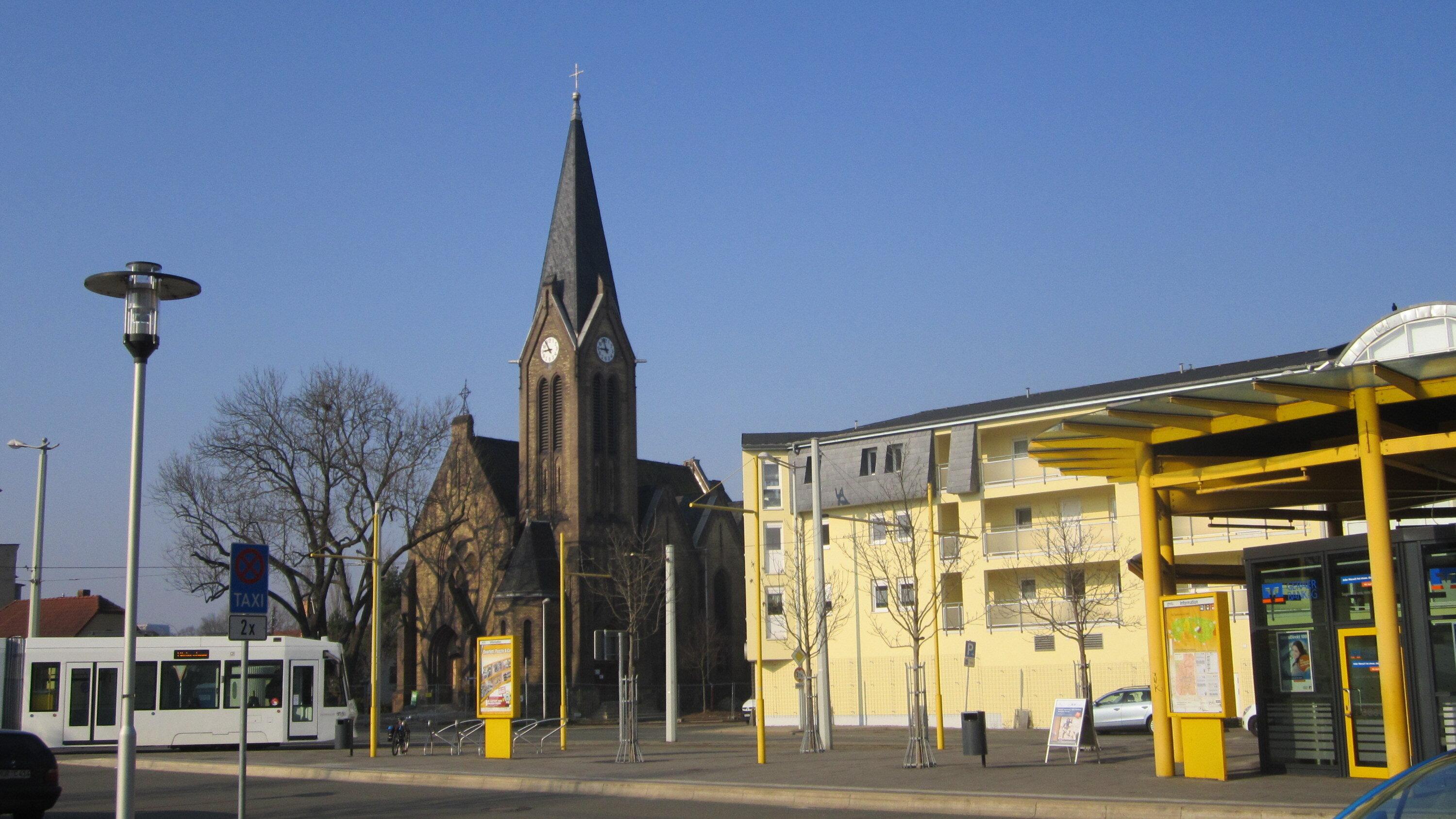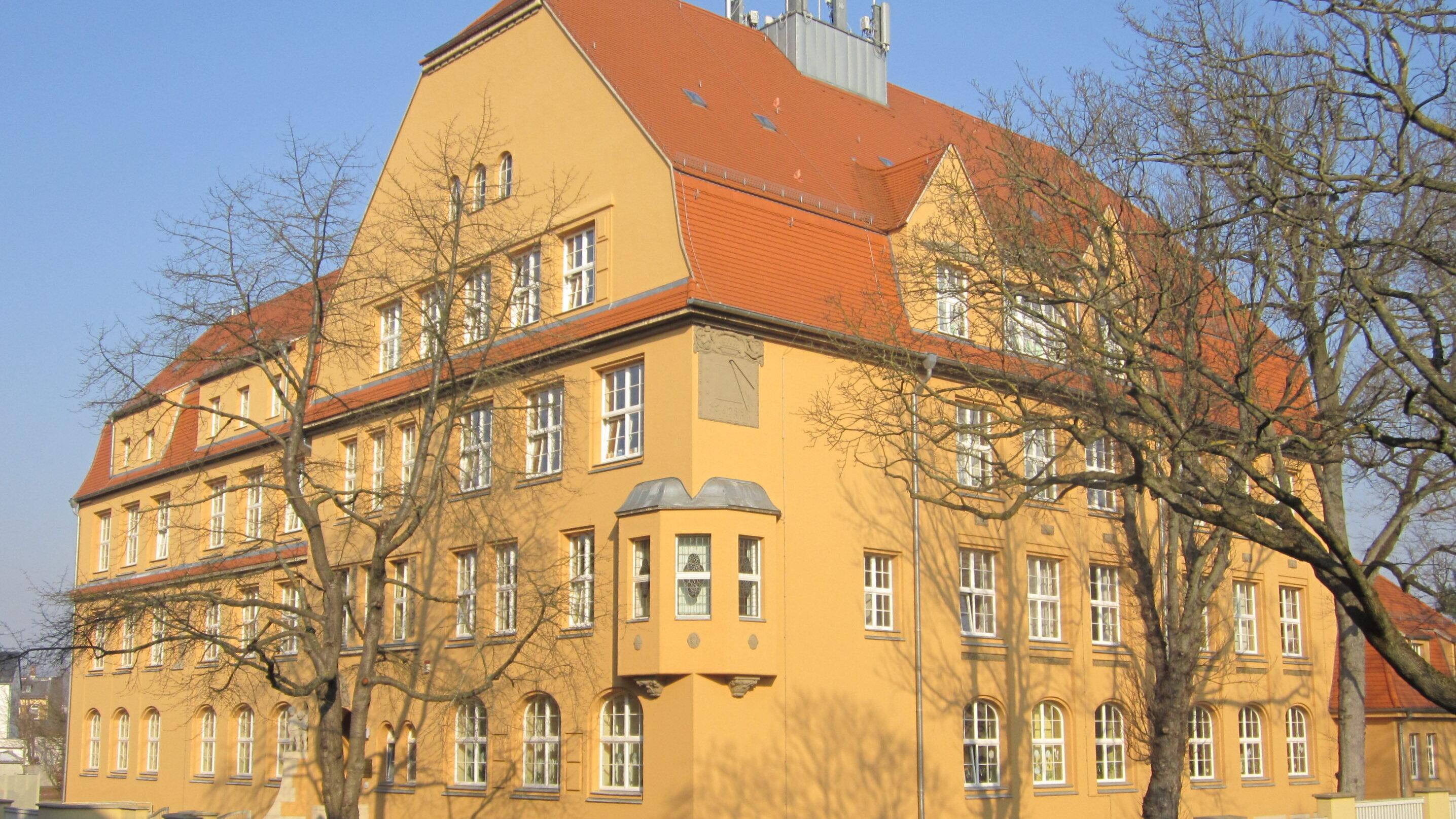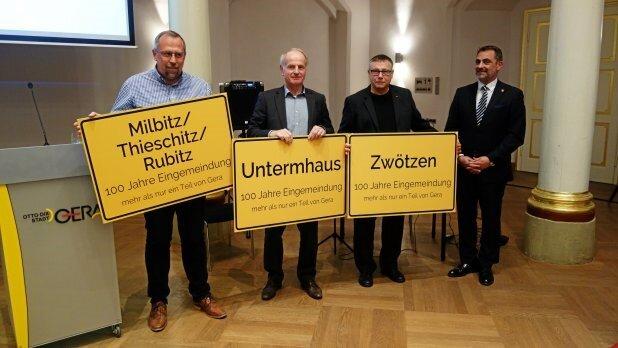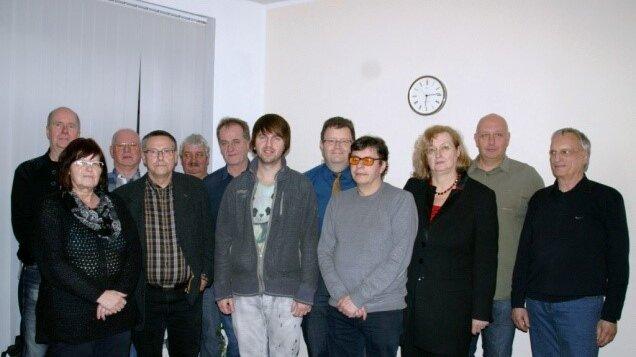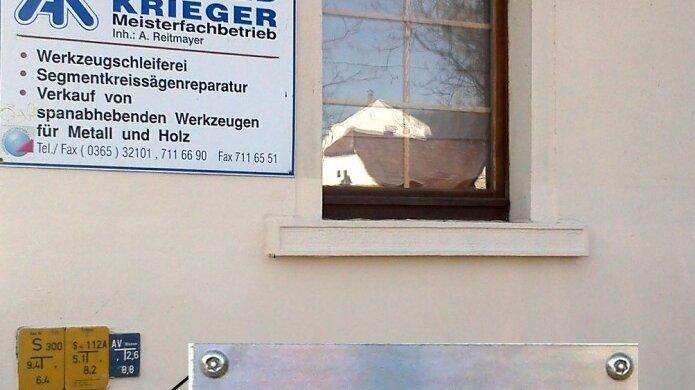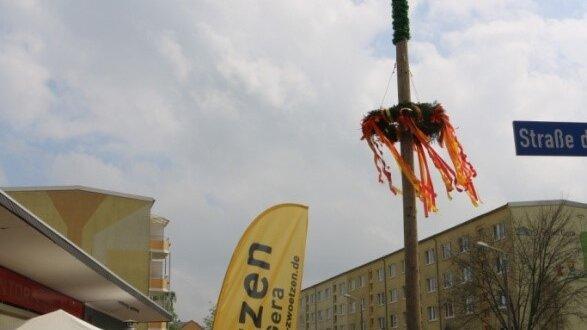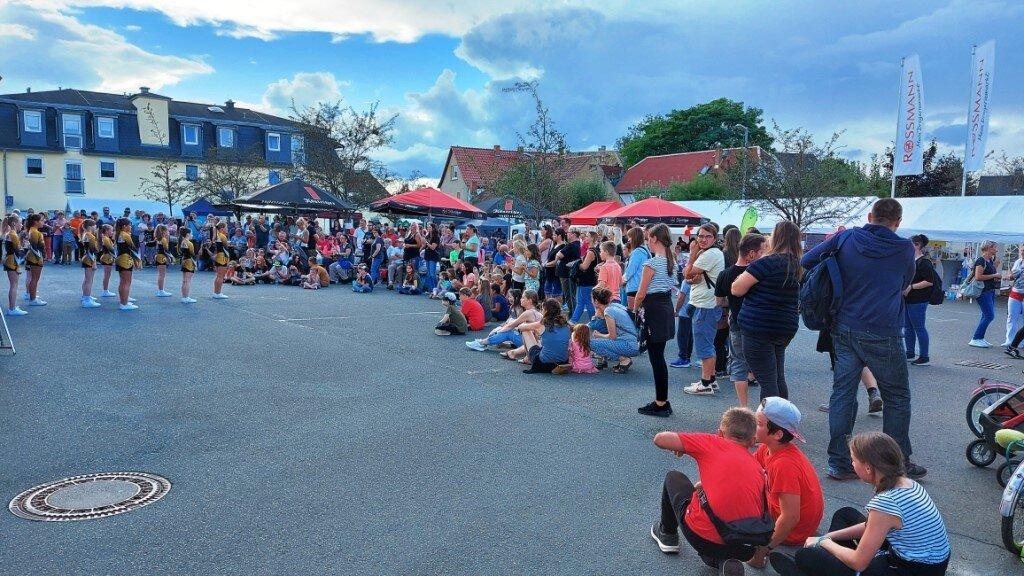District Zwötzen
![[Translate to Englisch:] . © Dr. Wolfgang Kochendörfer](/_next/image?url=https%3A%2F%2Fcms.gera.de%2Ffileadmin%2Fgera_de%2F_processed_%2F2%2F0%2Fcsm_Zw0_2749_Kirche_WS_d6c19c4b78.jpg&w=3840&q=75)
Data and facts:
| Name of the district: | Zwötzen |
| with the localities: | |
| District of the city of Gera since: | 01.01.1919 |
| Surface area: | 317 ha |
| Population: (as at: 31.12.2022) | 4.573 |
Location and transport connections
| Location: | The Zwötzen district is located in the southern part of Gera. It is bordered by the Elster and the railroad embankment of the Saalfeld line to the west, by the railroad line of the Gößnitz line to the north, by the Elstertal settlement and the Ziegenknoten road to the south, both inclusive, and to the east as far as Kaimberger Straße/Höhe Dreiherrnstein exclusively. The forest and agricultural areas on the Eichberg east of the Lasur already belong to Kaimberg. |
| Utilization: | Until the middle of the 19th century, Zwötzen was dominated by agriculture. With the subsequent industrialization, the town on the outskirts of Gera gained in importance due to the settlement of housing and industry and grew immensely. Companies in the textile and metal industry with plenty of jobs emerged. The town took on a small-town character with an interesting design. Some of the industrial buildings are still used for industrial or educational purposes today. The importance of the manufacturing companies as employers has declined considerably. The character is increasingly changing towards a residential town. |
| Landscape and site design: | Zwötzen is a predominantly urban and partly industrial suburb in the valley where the Schafgraben flows into the Weiße Elster. It is bordered to the north-east by the Lasurberg with its woodland and to the south-east by the Büchsenberg with the district of Taubenpreskeln. To the west, Zwötzen borders on the districts of Debschwitz and Lusan. The town center can be seen as the beginning of Werdauer Straße with the oldest houses across the Anger to the striking St. Martini Protestant church and the streetcar turnaround loop. The neighboring hills mentioned invite you to take a walk and offer interesting views. |
| Transport connections: | Zwötzen can be reached from Gera-Pforten via Zwötzener Straße or Straße der Völkerfreundschaft, from Lusan via Zwötzener Brücke, and via Liebschwitzer Straße and Kaimberger Straße. The district is relieved of long-distance traffic. Zwötzen is located on the railroad lines to Saalfeld and Greiz. With the completion of the construction work by DB Netz AG and the commissioning of the "Gera bypass", the Greiz line was merged with the Saalfeld line between Gera Debschwitz and Gera-Röppisch in 2016. This makes the new Zwötzen station more important as a public transport connection point. The former Saxon railroad line via Gera-Ost was closed after almost 125 years. Zwötzen is well served by local public transport with streetcar lines 1 and 2 and city bus lines 16, 18 and 25. |
History:
Zwötzen
Author: Dr. Wolfgang Kochendörfer
The village of Zwötzen has 700 years of history behind it and is first mentioned in a document dated September 5, 1314. In this document, Henry the Elder of Gera grants the Cronschwitz monastery interest from a mill near Zwötzen, among other things. However, finds of stone tools also prove that the area was settled much earlier.
Reinhold von Zwötzen from 1358 is recorded as the first lord of the manor. In the 16th century, the village belonged to several successive Gerhard von Lüschwitz family members of the same name. In addition to the manor, the village area was divided into 12 fiefs of different sizes and had a small church on the Schafgraben in place of today's church with a surrounding cemetery. This was often the victim of severe flooding from the Weiße Elster.
Away from the trade routes, the village was relatively spared the effects of the Thirty Years' War, at the end of which it had 54 inhabitants and 12 houses.
The aforementioned agricultural structure lasted until the 19th century. The estate shaped life in the village, supported school education and also had its own jurisdiction. Towards the end of the 17th century, the von Lüschwitz family died out in Zwötzen. After 1820, the manor lost its importance. In dire need of repair, the manor house was demolished in 1971.
During the rural period, the population grew only slowly. However, this changed dramatically with industrialization. While Zwötzen had around 400 inhabitants in the middle of the 19th century, 60 years later there were already over 5300. Initially, families of workers who were employed in Gera settled here. In addition to a number of construction and craft firms, the transport company Franz Rothe und Söhne, founded in 1878 and intertwined with Zwötzen, is particularly noteworthy. The Gera-Greiz worsted yarn spinning mill in Ruckdeschelstraße was the first large company to go into operation in 1890, with Eugen Ruckdeschel as chairman of the supervisory board until 1919. Paul Schulenburg grew the silk weaving mill in Lange Straße and brought in the Bauhaus architect Thilo Schoder, a student of Henry van de Velde. In the metal industry, the larger companies "Wesselmann-Bohrer-Compagnie", "Sonntag, Pressen- und Scherenbau" and "Gebrüder Reinhold" set up shop. Schoder influenced the New Building movement in the town, both in industrial and residential construction.
Pedestrians crossed the Elster via a ford or a temporary temporary footbridge. The village received its first bridge in 1870/71 when the Prussian railroad line to Saalfeld was built over Wolfsgefärth.
However, pedestrians were not allowed to use it. In 1892, the Royal Saxon State Railway was forced to build a second line via Liebschwitz to Plauen, giving Zwötzen (later Gera-Ost) its first stop. Today's Gera-Zwötzen station was not added until 1897.
Following the old model, the railroad line to Greiz was rejoined with the Saalfeld line to Gera-Röppisch in 2016. The tracks to Gera-Liebschwitz were decommissioned and trains to Greiz now also stop at Gera-Zwötzen station.
Next to the railroad bridge, a single-lane road bridge was opened to traffic in 1907. It was widened to two lanes in 1926.
Zwötzen's first streetcar connection was established in 1925 via the Ochsenbrücke bridge into Ruckdeschelstraße. After its dismantling, the new light rail line 1 Untermhaus - Zwötzen with its terminus was put into operation in 2006.
The old Protestant village church was demolished in favor of a new, larger neo-Gothic church, which was consecrated as St. Martini on November 10, 1895. Centrally located, it is now a good landmark for the village with its church spire.
Zwötzen was incorporated into Gera by emergency law on January 1, 1919, together with a number of other suburbs. Until then, Alfred Görler had controlled the fate of the village as chairman of the local council.
We know of the first school lessons in 1695. With the strong growth of the population during industrialization, the number of children also grew and with it the class sizes. In 1911, principal Bruno Geweniger was responsible for the construction of today's Zwötzen school for up to 800 pupils.
Another large school opened in Ackerstraße in 1975, with roughly the same number of pupils. After reunification, however, it was no longer needed and was demolished in 2012 to make way for a supermarket.
The first pre-school childcare facility to open its doors in 1892 was the "Heinrichsstift" Protestant childcare center. And in 1943, Gera's first company kindergarten was opened in the worsted spinning mill. During the GDR era, a further four childcare facilities were added. Childcare was thus exemplary, enabling women to pursue employment. Today, only the two daycare centers "Spatzennest" and "Heinrichsstift" can still be used.
Sport has always played an important role in Zwötzen. The first gymnastics club was founded in 1876. From 1893, the site of today's Karl Harnisch sports center was acquired and expanded with a gymnasium.
A shooting club was also established with a shooting range on the banks of the Elster, which opened the Schützenhaus in 1914. After being renamed "Volkshaus Gera-Zwötzen", amateur artists moved in here in the GDR and the hall was used by companies and schools as well as for dance events.
Towards the end of the Second World War, the factories were also damaged by bombing raids. In April 1945, at the last minute before the Americans marched in, the railroad bridge was blown up by the Volkssturm. The Soviet military administration expropriated all the companies and completely dismantled the metalworking factories. The Wesselmann-Bohrer-Compagnie was hit the hardest, as it had supplied the armaments industry. It was taken over by SDAG Wismut, converted into a company vocational school during the GDR era and is now home to the East Thuringia Training Center. The textile industry with the companies Thorey and Getzner remained in the Schulenburg & Bessler buildings to this day. The two other machine factories were affiliated to Wema UNION during the GDR era and were dismantled after reunification.
During the GDR era, a number of new blocks of flats were built, particularly in the area of Straße der Völkerfreundschaft and Walter-Gerber-Straße, to create urgently needed living space, primarily for Wismut employees.
Good medical care conditions were created in 1955 with the opening of the "Clara Zetkin" polyclinic in Lasurstraße, where up to 30 doctors could work. This building is still used today as a medical center and pharmacy.
In order to control the flooding, the river was diked from 1926 with the Elster correction in Zwötzen. However, as the most recent damage event on June 2-3, 2013 shows, this measure was not sufficient. A corresponding water level mark is attached to the building at Pfarrstraße 1. This flood of the Weiße Elster is comparable to that of July 11, 1954 and caused severe damage to residential buildings, the church, sports facilities and other buildings.
